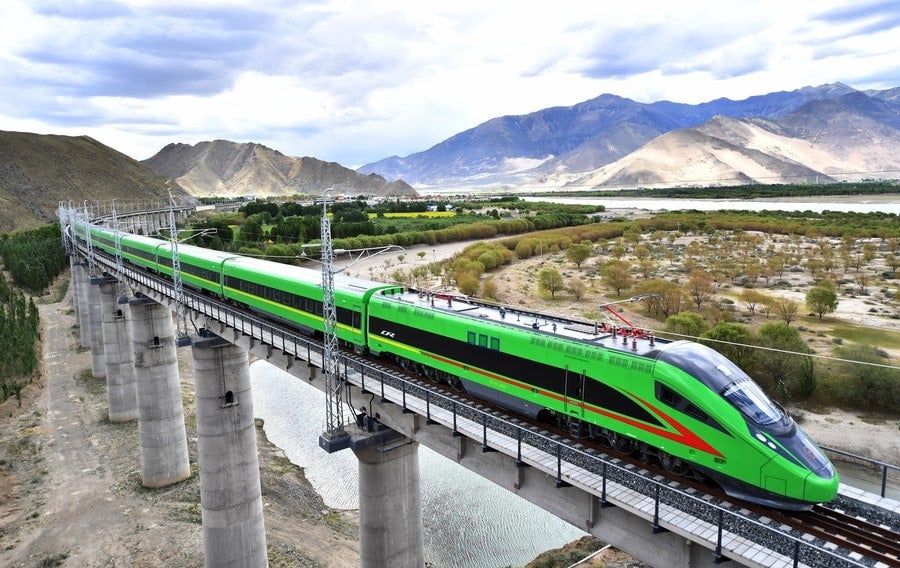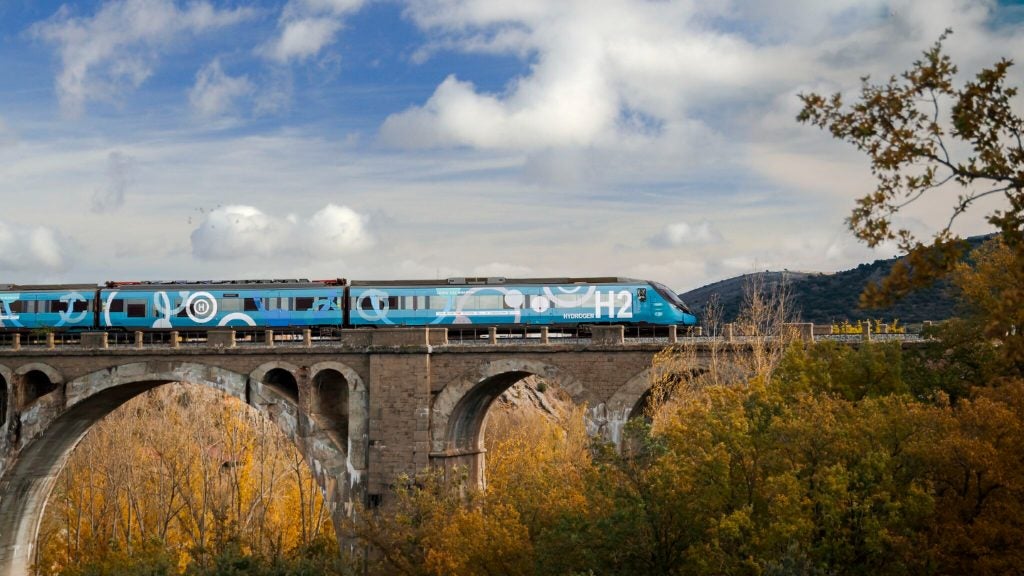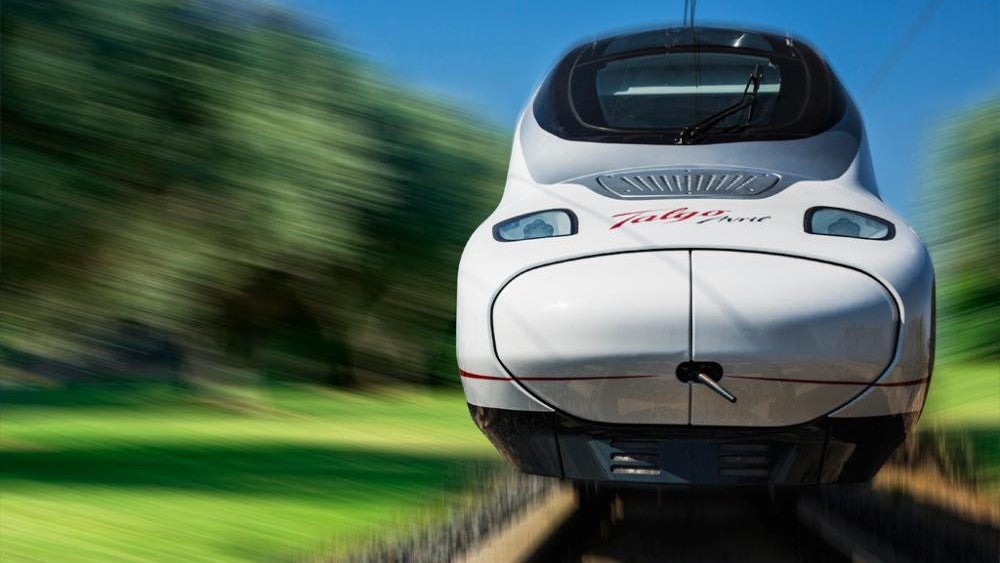
The first high-speed rail system began operations in Japan in 1964 which saw the Tokaido Shinkansen travelling up to speeds of 130 mph. Since then advancements in bullet train technology have seen several countries, such as Belgium, Denmark, China, France, Italy and many more, building and developing high-speed rail infrastructure.
With China’s railway infrastructure being notable for its speed, green credentials, and impressive design, the addition of Tibet’s first-ever electric bullet train not only highlights China’s remarkable engineering but aids the region of Tibet too.
The inclusion of the train – which entered service on 25 June -now allows passengers to travel from the capital of Lhasa to the city of Nyingchi in three and a half hours. Prior to the train, the journey would take over five hours in a car. The train also reduces travel time from Shannan to Nyingchi from six to around two hours. Travelling at speeds of 160km the bullet train, powered by both internal combustion and electric engines, is able to run on electrified and non-electrified railway lines.
With the railway development costing $5.6bn, paired with it taking over six years to construct the route, many design features have been included on the train as well as daring engineering to make the route possible.
World record-breaking construction
Dubbed ‘The Roof of the World’ – due to it being three miles above sea level – the Tibetan Plateau is a vast, flat area of land enclosed by some of the tallest mountains in the world. Constructing the railway line at this altitude and on a rock-dominated surface was a daring and challenging experience for the team who worked to establish the line. Stretching 435km the line gives provincial-level regions of mainland China access to the new high-speed way of train travel.
The Lhasa-Nyingchi line sees 90% of the route sitting at altitudes higher than 3,000 metres above sea level as it traverses through mountain tunnels, bridges, and archways. Featuring 47 tunnels and 121 bridges which make up for 75% of the entire route, the line also includes a 525m long Zangmu Railway Bridge making it the largest and highest arch bridge in the world. The highest section of the rail line stands over 5,100m above sea level, a record height for any electrified railway in the world.
How well do you really know your competitors?
Access the most comprehensive Company Profiles on the market, powered by GlobalData. Save hours of research. Gain competitive edge.

Thank you!
Your download email will arrive shortly
Not ready to buy yet? Download a free sample
We are confident about the unique quality of our Company Profiles. However, we want you to make the most beneficial decision for your business, so we offer a free sample that you can download by submitting the below form
By GlobalData
With the route cutting through tunnels and over impressively engineered bridges this will enable passengers to take in the features of the Tibetan landscape from above as they enjoy their journey. On route passengers will be able to see the Yarlung Zangbo Grand Canyon as well as the Nanga Bawa Peak – the highest mountain in the Nyingchi region of Tibet with an altitude of 7783m.
Although the train is slow when compared to other high-speed trains which are running within China – which average around 300km/h – the train is able to transport 10ml tonnes of freight per year according to Xinhua’s (New China News Agency) report.
For China’s ruler, Xi Jinping, high-speed rail acts as a social tool for political influence and the integration of regions into the mainstream. Speaking to Global Times, Qian Feng, director of research at the National Strategy Institute at Tsinghua University said: “If a scenario of a crisis happens at the China-India border, the railway will provide a great convenience for China’s delivery of strategic materials.”
An array of design features for high altitudes
Manufactured by the state-owned China State Railway Group, the “Fuxing” electric bullet trains have been independently developed by China and boast a number of impressive design features. Each bullet train integrates the internet, cloud computing, 5G and other new technologies which see nine different intelligent operation and monitoring systems being onboard.
Facilities onboard the train also offer passengers a sense of modern-age travel with smart vending machines and intelligent lighting in toilets. On board the train, conductors also provide services to passengers such as medical assistance, guidance, and translation.
Alongside these impressive technology-based design features and services the trains provide for passengers, other design features have been included with safety in mind. With the train travelling at higher altitudes than normal passenger travel this sees the trains being equipped with an automated oxygen supply system – ensuring that oxygen levels are kept at 23.6% at all times, which is higher than the average 21% found at normal atmosphere level.
Paired with the inclusion of the oxygen system the train’s windows have also received unique design features: UV-resistant glass. This special layer of glass has been designed to withstand the region’s high UV levels which are present in higher altitudes due to less atmosphere being present for it to be absorbed.
The power of electric
As with other bullet trains currently in service, the Tibet Fuxing train is powered by both internal combustion and electric engines. The dual-power engine within the train sees it being able to be switched from electric power to an internal combustion engine if an emergency arises at a high altitude.
Since 2013 the Chinese national railway has considerably reduced its C02 emissions from 35.5 to 5.44 thousand metric tonnes in 2019 – data supplied by Statistica. This is predominantly due to the country utilising electrification systems which largely reduce coal consumption for railways.
With the railway line serving an area of more than 226,000 square km – which equates to 18.4% of Tibet’s entire land mass – more than 1.3 million people will directly benefit from this latest extension of the Chinese railway network.






